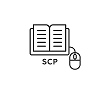
Migrating to Australia with your family can be a rewarding but complex process. With its high standard of living, excellent healthcare, and educational opportunities, Australia is a sought-after destination for families worldwide. This guide will walk you through the necessary steps to make your migration smooth and successful. Let us quickly look at the necessary steps required to migrate to Australia with your family.
Determine Your Eligibility
Skilled Migration Programs: The most common pathway for skilled workers is through the General Skilled Migration (GSM) program. This includes the Skilled Independent Visa (Subclass 189), the Skilled Nominated Visa (Subclass 190), and the Skilled Work Regional (Provisional) Visa (Subclass 491). These visas require you to have skills in an occupation that is in demand in Australia.
Family Sponsorship: If you have a close family member who is an Australian citizen or permanent resident, they can sponsor you for a Family Visa. The most common visas under this category are the Partner Visa (Subclass 820/801) for spouses or de facto partners, and the Parent Visa (Subclass 103) for parents of settled Australian citizens.
Other Pathways: There are also specific programs for business investors, entrepreneurs, and regional migration programs that can be explored. The Business Innovation and Investment Program (Subclass 188/888) is for individuals who want to own and manage a business in Australia or invest in the Australian economy.
Skills Assessment
For skilled migration, you must undergo a skills assessment. This assessment is carried out by a relevant assessing authority in Australia, which evaluates whether your qualifications and work experience match Australian standards. Each profession has a specific assessing body (e.g., Engineers Australia for engineers, ACS for IT professionals). It’s crucial to gather all necessary documents such as educational certificates, work references, and detailed job descriptions to ensure a smooth assessment process.
Expression of Interest (EOI)
Once your skills are assessed, you need to submit an Expression of Interest (EOI) through the SkillSelect system. An EOI is not a visa application but a way to show your interest in applying for a visa. You will need to provide details about your skills, work experience, and qualifications. It’s important to accurately complete your EOI, as false information can lead to your application being rejected.
Invitation to Apply
If your EOI meets the criteria and you have enough points, you will receive an invitation to apply for a visa. Points are awarded based on factors such as age, English proficiency, skilled employment, and educational qualifications. For example, younger applicants generally score higher points, and those with proficient English scores (like IELTS, PTE, or TOEFL) gain additional points. Additionally, having Australian work experience or qualifications can significantly boost your points.
Visa Application
After receiving an invitation, you must submit a visa application. This includes providing detailed documentation such as:
- Identification documents: Passports, birth certificates, and marriage certificates.
- Proof of skills and qualifications: Degrees, certificates, work references, and professional memberships.
- English proficiency: IELTS, PTE, or TOEFL scores demonstrating your ability to communicate effectively in English.
- Health and character requirements: Medical examinations and police checks from countries where you have lived for more than 12 months in the past 10 years.
Ensure all documents are certified copies and translated into English if necessary. Incomplete or incorrect applications can delay the process or result in a refusal.
Health and Character Requirements
All family members included in the application must meet health and character requirements. This usually involves:
- Health Examination: Conducted by approved panel physicians to ensure you meet Australia’s health standards. This can include blood tests, chest x-rays, and other relevant health checks.
- Police Clearance: Certificates from countries where you have lived for 12 months or more in the past 10 years. This ensures you do not have a significant criminal record that could pose a risk to the Australian community.
Prepare for the Move
Once your visa is granted, it’s time to prepare for the move. Consider the following:
- Housing: Research housing options and costs in the city you plan to live in. Websites like realestate.com.au and domain.com.au can provide insights into rental and purchase prices.
- Schooling: If you have children, explore schooling options and enrollment requirements. Australia has a mix of public and private schools, and the Australian Curriculum ensures a high standard of education across the country.
- Employment: Look for job opportunities and understand the job market in your field. Websites like SEEK, Indeed, and LinkedIn are valuable resources for job hunting. Consider networking and joining professional associations related to your field.
- Healthcare: Familiarize yourself with Australia’s healthcare system. While Medicare provides essential health services, private health insurance can offer additional benefits and shorter wait times for elective procedures.
Settling in Australia
Upon arrival, ensure you:
- Register with Medicare: Australia’s public health insurance system. This will allow you to access essential healthcare services.
- Open a Bank Account: Essential for managing your finances. Major banks like Commonwealth Bank, ANZ, Westpac, and NAB offer various banking services.
- Apply for a Tax File Number (TFN): Required for working in Australia. You can apply for a TFN online through the Australian Taxation Office (ATO) website.
- Enroll Children in School: Complete the necessary enrollment procedures for your children’s education. Research school zones and their reputations to find the best fit for your family.
Tips for a Smooth Transition
- Join Expat Communities: Connecting with others who have made the move can provide support and advice. Online forums and social media groups are great places to start.
- Learn About Australian Culture: Understanding local customs, social norms, and even the slang can help you integrate smoothly. Australia is known for its laid-back and friendly culture.
- Plan Finances: Ensure you have a financial buffer to cover initial costs and any unforeseen expenses. It’s advisable to have at least six months of living expenses saved before moving.
Conclusion
Migrating to Australia with your family involves careful planning and adherence to immigration requirements. By following the steps outlined in this guide, you can navigate the process with greater confidence and ease. Australia offers a vibrant and diverse environment for families to thrive, making the journey well worth the effort. From beautiful landscapes to high-quality education and healthcare, Australia provides an excellent quality of life for those willing to make the move.
Related Articles:
- Job Opportunities in the UK for Africans: A Comprehensive Guide
- Top 20 Job Applications for Immigrants in the USA
- Remote Jobs with Visa Sponsorship in the USA for Immigrants








